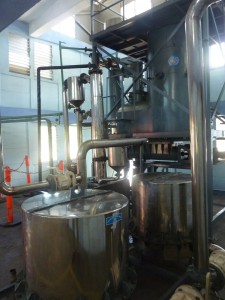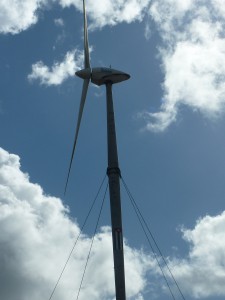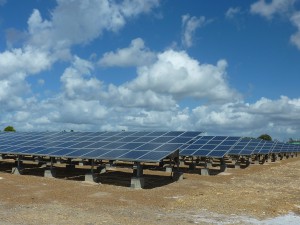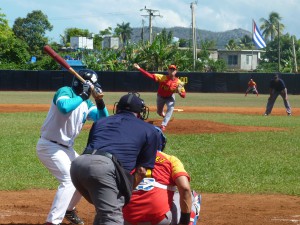11th March 2014 Havana, Cuba
Pirates, power and pine trees
I spent much of last week in Isla de la Juventud, one of the many hundreds of islands that make up Cuba. It’s called Juventud because thousands of youths – Cuban and foreign – studied there in boarding schools in the 1980s. Out of the 100 schools that were planned to be built sixty-two were finished, only five of which are still used today. The others mainly lie in disuse although some are being turned into much-needed housing for farmers or as community centres with shops etc. Sadly the school programme closed down in the 1990s when, with the demise of the Soviet Union, the country could no longer afford to provide free scholarships to the children.

One of the reasons for my visit to Isla de la Juventud was to see some of the renewable energy projects on the island. Like the UK, Cuba is trying to use fewer fossil fuels to produce its electricity. Rather than using oil the country is turning to biomass, wind and, above all, sun. I saw all three being used in ‘the Isla’. On the island’s south coast, a small 45kw biomass provides all the electricity needed in the tiny fishing village of Cocodrilo (population of 326 my hosts proudly told me). Meanwhile in the east of the island near La Fe town, a field of solar panels produces about 800kw and six wind power generators 1.5mw of energy. These may not sound very big but total demand on the island is only 12-20mw – the range is because demand depends on the time of day and the season – for example it peaks at 6pm on work days in the summer when everyone gets home from work and puts on the airconor TV and makes coffee. So the projects I saw generate about 10% of the island’s needs and with more solar parks planned, in about 3 years’ time 30% of Isla’s energy will come from renewable sources. That compares to the 11.3% of UK energy that came from renewable sources in 2012.

One of the big challenges in Isla – not one we face in the UK – is installing equipment that is hurricane-proof. The island is right on the path of many hurricanes or cyclones that hit Cuba (the season is June-November if you’re coming here on holiday and want to avoid it) and many buildings were destroyed or badly damaged by Hurricane Gustav which hit in 2008. ‘How do you make a wind turbine that is hurricane-proof given it is about 100m high and has blades that are 25m across?’ you might ask. The answer is to install one that can be lowered (gently) down to the ground which has the added benefit of allowing you to clean the blades. Making hurricane-proof solar panels is a bit more difficult as any windbreak you put in the path of the wind, such as a line of pine trees which the Isla is famous for, will block out the sun. The panels I saw would withstand 167km winds according to my guide from the UNE (Union Eléctrica) so let’s hope Isla doesn’t see any stronger winds than that for the next 25-30 years (the life of the panels).

One problem I heard about on the Isla is the lack of employment and how to keep people occupied. As the Cuban government has recognised, many Cuban government workers – approximately 90% of the workforce is employed by the state – are unproductive or under-employed so this is a country-wide problem that needs addressing. Some of the take-up has been in the country’s growing private sector where more than 400,000 people are now employed but perhaps the government’s new focus on foreign investment (the subject of a previous blog) will make a difference.

Finally I was lucky to see the local baseball team playing. Avid fans of this blog (Hi Mum!) will remember I tipped Isla de la Juventud to win Cuba’s baseball championship this year and one of my New Year’s wishes was to see them playing live. That wish has now been realised although I’m sorry to say Isla conceded 8 runs as soon as I sat down (the equivalent of 3 goals in a football match) and went on to lose the game. It looks like they’ll finish outside of the qualifying places and won’t make it to the championship final so if you took out a bet on the basis of my recommendation, I’m afraid you’re not going to win anything. The team’s nickname is ‘Los Piratas’ and are named after Francis Drake and his ilk who used to plunder the Spanish galleons off the coast of Isla. Yet another British link to Cuba.
Really good to get varied, up-to-date and reliable info on Cuba – thanks, Tim!